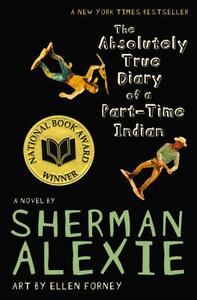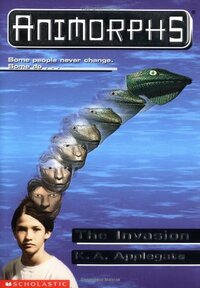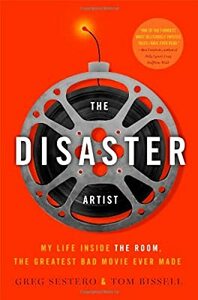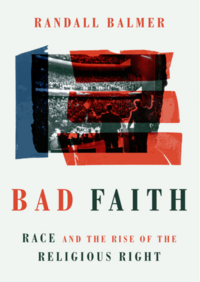Take a photo of a barcode or cover
kevin_shepherd's Reviews (563)
“…war is treachery and hatred, the muddling of incompetent generals, the torture and killing and sickness and tiredness, until at last it is over and nothing has changed except for a new weariness and new hatreds.”
“I draw because I feel like it might be my only real chance to escape the reservation. I think the world is a series of broken dams and floods, and my cartoons are tiny little lifeboats.”
I’m not sure Nellie Bly knew exactly how difficult it would be for a female journalist to find work in 1887 New York. She had left a good job in Pittsburg and moved to the Big Apple with little else but high hopes. Four months later, after numerous rejections, she was almost penniless and still unemployed. Finally, the New York World gave her an assignment; if she agreed to go undercover and write an exposé on the treatment of patients at the then-infamous Blackwell Island Lunatic Asylum for Women, she had a job. It was illegal, it was dangerous, but it was an opportunity. She agreed.
What Bly wrote changed the face of institutional mental health care in America. Her series of investigative articles shocked 19th Century sensibilities. As a result, state investigations were launched, protocols were drastically altered, and an additional $850,000 (that’s $26,556,505.26 in 2022 dollars) were allocated for New York’s mental health services.
This is a short but compelling read. Yes, it’s a little “tabloidy” and melodramatic but it suits the era in which it was written, and its historical significance is enormous. I can think of at least three films that played on the theme of Bly’s nightmarish experiences: The Snake Pit (Anatole Litvak, 1948), Shock Corridor (Samuel Fuller, 1963), and, of course, One Flew Over the Cuckoo’s Nest (Milôs Forman, 1975). Good movies all, and all have Nellie Bly to thank.
What Bly wrote changed the face of institutional mental health care in America. Her series of investigative articles shocked 19th Century sensibilities. As a result, state investigations were launched, protocols were drastically altered, and an additional $850,000 (that’s $26,556,505.26 in 2022 dollars) were allocated for New York’s mental health services.
This is a short but compelling read. Yes, it’s a little “tabloidy” and melodramatic but it suits the era in which it was written, and its historical significance is enormous. I can think of at least three films that played on the theme of Bly’s nightmarish experiences: The Snake Pit (Anatole Litvak, 1948), Shock Corridor (Samuel Fuller, 1963), and, of course, One Flew Over the Cuckoo’s Nest (Milôs Forman, 1975). Good movies all, and all have Nellie Bly to thank.
“We see that while both [Albert Einstein and Erwin Schrödinger] maintained an interest in philosophy, Einstein was more inclined to favor Spinoza’s rigid view that the world’s laws were set from the beginning and might be logically deduced, while Schrödinger favored a more malleable perspective shaped by eastern beliefs in the veil of illusion in which society’s changing viewpoint molds truth.”
Having previously read Hoffman (Albert Einstein: Creator and Rebel, 1972) and Ferreira (The Perfect Theory, 2014), I felt like I had a fairly good handle on Einstein already. Erwin Schrödinger, on the other hand, was still something of an enigma. All I really knew (or thought I knew) about Schrödinger was his hypothetical cat—and even that wasn’t completely clear to me. I had no clue about the dynamics of their friendship. For example, I was totally unaware that it was Einstein who nominated Schrödinger for the Nobel Prize in 1933, even though he publicly took shots at Schrödinger’s quantum approach.
“The more success quantum theory has the sillier it looks.” ~Albert Einstein
Albert looked upon quantum mechanics, a theory he himself helped develop, as relevant but incomplete. Where Einstein saw deficiency (e.g. entanglement, indeterminacy and jumps between states) Schrödenger saw pliability and functionality. Quantum theory refuted relativity by its advocacy of random chance; relativity theory refuted quantum by its advocacy of determinism.
“It is hard to sneak a look at God’s cards. But that he would choose to play dice with the world is something I cannot believe for a single moment.” ~Albert Einstein, 1942
I enjoyed this read immensely, though I must admit that there were references (mainly mathematical) that went completely over my head. This deepened my fanboy appreciation for Einstein, and gave me a much better understanding of Schrödinger (and his cat).
__________________________________
“We have more reason to be grateful to [Albert Einstein] than to all the rabbis who have ever wailed, or who ever will.” ~Christopher Hitchens, 2007
Having previously read Hoffman (Albert Einstein: Creator and Rebel, 1972) and Ferreira (The Perfect Theory, 2014), I felt like I had a fairly good handle on Einstein already. Erwin Schrödinger, on the other hand, was still something of an enigma. All I really knew (or thought I knew) about Schrödinger was his hypothetical cat—and even that wasn’t completely clear to me. I had no clue about the dynamics of their friendship. For example, I was totally unaware that it was Einstein who nominated Schrödinger for the Nobel Prize in 1933, even though he publicly took shots at Schrödinger’s quantum approach.
“The more success quantum theory has the sillier it looks.” ~Albert Einstein
Albert looked upon quantum mechanics, a theory he himself helped develop, as relevant but incomplete. Where Einstein saw deficiency (e.g. entanglement, indeterminacy and jumps between states) Schrödenger saw pliability and functionality. Quantum theory refuted relativity by its advocacy of random chance; relativity theory refuted quantum by its advocacy of determinism.
“It is hard to sneak a look at God’s cards. But that he would choose to play dice with the world is something I cannot believe for a single moment.” ~Albert Einstein, 1942
I enjoyed this read immensely, though I must admit that there were references (mainly mathematical) that went completely over my head. This deepened my fanboy appreciation for Einstein, and gave me a much better understanding of Schrödinger (and his cat).
__________________________________
“We have more reason to be grateful to [Albert Einstein] than to all the rabbis who have ever wailed, or who ever will.” ~Christopher Hitchens, 2007
Okay, maybe this is just the orange juice (vodka) talking but the whole cannibalism tangent near the beginning was just weird—yes, it’s fascinating, but still weird. Imagine a Billy Wilder film noir feature (e.g. Sunset Boulevard) with eight minutes of Dario Argento (e.g. Suspiria) inexplicably spliced in. Yes we all enjoyed the excursion, but it had no earthly connection to the plot. None. Nada. Zilch. WTF Hammett??
_______________________________
“So Charles pulls down a volume from the shelf, and has the boy read a section about Alfred Packer, who may or may not have killed and eaten his companions in the Rockies in 1873… And then the plot resumes and everyone goes on, and no mention of it was ever made again, and I'm left asking - what was THAT all about?” ~Jeff Grubb, The Cannibal and the Thin Man, 2012
“The murders in the book aren't too descriptive, particularly in comparison with today's standards… It is the four page story about cannibalism in the United States that Wynant's son Gilbert reads that pushes the violence into the moderate zone. Why Hammett felt this part was important to the story plot I'll never know…” ~Sara M., Library Hospital, 2009
_______________________________
NOTE: This cannibal conundrum is mostly tongue-in-cheek (pun intended).
_______________________________
“So Charles pulls down a volume from the shelf, and has the boy read a section about Alfred Packer, who may or may not have killed and eaten his companions in the Rockies in 1873… And then the plot resumes and everyone goes on, and no mention of it was ever made again, and I'm left asking - what was THAT all about?” ~Jeff Grubb, The Cannibal and the Thin Man, 2012
“The murders in the book aren't too descriptive, particularly in comparison with today's standards… It is the four page story about cannibalism in the United States that Wynant's son Gilbert reads that pushes the violence into the moderate zone. Why Hammett felt this part was important to the story plot I'll never know…” ~Sara M., Library Hospital, 2009
_______________________________
NOTE: This cannibal conundrum is mostly tongue-in-cheek (pun intended).
I could write about the religious symbolism:
"Cassie put her hand on my cheek. "He doesn't want you to die for him. Don't you realize? He's dying for us.""
Or the homoerotic tones:
"About three minutes after he'd started the change, there he was a completely normal Tobias, sitting naked on the end of my bed. "I haven't figured out how to morph clothes yet, like Cassie," he said sheepishly."
Or how the plot borrows heavily from Jack Finney's Invasion of the Body Snatchers.
But I'd much rather focus on how my son Tyler, who was 7 years old in 1996, was instilled with a life-long love of reading by this K.A. Applegate potboiler. And that alone is worthy of five stars, if not six.
"Cassie put her hand on my cheek. "He doesn't want you to die for him. Don't you realize? He's dying for us.""
Or the homoerotic tones:
"About three minutes after he'd started the change, there he was a completely normal Tobias, sitting naked on the end of my bed. "I haven't figured out how to morph clothes yet, like Cassie," he said sheepishly."
Or how the plot borrows heavily from Jack Finney's Invasion of the Body Snatchers.
But I'd much rather focus on how my son Tyler, who was 7 years old in 1996, was instilled with a life-long love of reading by this K.A. Applegate potboiler. And that alone is worthy of five stars, if not six.
Lindqvist has been called "The Swedish Stephen King." While he's not yet as prolific, he certainly has the chops. I came to this book via a love of Låt den rätte komma in, Tomas Alfredson's 2008 film adaptation. This proved to be one of those rare anomalies where both the movie and the novel that inspired it are absolutely stellar.
For fans of The Room, this is a must-read. Or should I say "must-listen" because, in audiobook format, Greg's impersonation of Tommy's accent is spot-on.
The oft unintentional hilarity of the film is nearly equaled by the insane antics behind-the-scenes. This is a wonderful and surprisingly respectful glimpse into the unique mind of producer-director-star Tommy Wiseau. Highly recommended.
The oft unintentional hilarity of the film is nearly equaled by the insane antics behind-the-scenes. This is a wonderful and surprisingly respectful glimpse into the unique mind of producer-director-star Tommy Wiseau. Highly recommended.
Sometimes a love story is just a love story...
Pamela Ribon and Cat Farris and Saida Temofinte have inked out a wonderfully weird, surprisingly warm fairy tale that speaks to those of us who know that conformity and real happiness are seldom seen in the same vicinity.
Speaking from a bear's perspective, I loved this. I loved that he loved her cat. I loved that he tried to watch Project Runway. I loved that when they were together they both got fatter. I loved that some (most) of her friends didn't get it and she was okay with that.
This is the perfect marriage of form and substance, of fantastic artwork and skillful literary arc - and the whole is even greater than the sum of its parts. Five stars.
Pamela Ribon and Cat Farris and Saida Temofinte have inked out a wonderfully weird, surprisingly warm fairy tale that speaks to those of us who know that conformity and real happiness are seldom seen in the same vicinity.
Speaking from a bear's perspective, I loved this. I loved that he loved her cat. I loved that he tried to watch Project Runway. I loved that when they were together they both got fatter. I loved that some (most) of her friends didn't get it and she was okay with that.
This is the perfect marriage of form and substance, of fantastic artwork and skillful literary arc - and the whole is even greater than the sum of its parts. Five stars.
“I’m afraid I don’t find much that I recognize as ‘Christian’ in the actions and policies of the Religious Right.” ~Randall Balmer, 2021
American Evangelicalism today looks little to nothing like the benevolent and progressive movement of its genesis. Early proselytizers campaigned for prison reforms, quality public education, subsidies for the poor and destitute, and increased rights for women. In short, they were in alignment with the teachings of Jesus Christ and embodied a “least of these” philosophy.
“God’s rule requires universal benevolence. I abhor a faith which has no humanity in it and with it. God loves both piety and humanity.” ~Charles G. Finney, Evangelist Minister, 1876
In Bad Faith, Randall Balmer makes a powerful argument that it was not until the mid to late twentieth century that compassionate and benevolent evangelicalism really fell apart.
1970: Following the shooting deaths of four students at Kent State University by the Ohio National Guard, evangelical preacher and leader Billy Graham defended the actions and policies of then president Richard Nixon. Many white evangelicals followed suit.
1973: In apparent opposition to the political shift lead by Graham, fifty-five evangelical leaders gathered at a YMCA in Chicago and drafted what became known as The Chicago Declaration of Evangelical Social Concern. In writing, these 55 prominent religious leaders reaffirmed their commitment to the teachings of Christ. They condemned racism, militarism and social inequity. Additionally, they publicly declared support of women’s rights. Unfortunately for everyone, the Chicago Declaration fell largely on deaf ears.
Enter the Abortion Myth
In spite of the assertions of talking heads like Jerry Falwell and Pat Robertson, it was the protection and preservation of racism [not abortion] that first motivated evangelical engagement in political discourse. Forget ‘Roe v. Wade’ (1973); the Republican Far-Right is founded on ‘Green v. Connally’ (1971).
On June 30 1971, the District Court of D.C. ruled that organizations engaged in racial discrimination or segregation could not be defined as charitable organizations and therefore were not eligible for tax exemption. For the IRS it was officially open-season on private religious schools with long histories of racist exclusion. At the top of their hit list was Bob Jones University in Greenville, South Carolina.
Formed primarily in response to the mandated desegregation order of ‘Brown v. Board of Education,’ 1954, many of these fundamentalist schools had an openly “whites only” policy. Ironically, it was the Christian-Right’s own Richard Nixon who first directed the IRS to rescind tax exemptions for all segregated private (religious) schools. The outcry was immediate:
“We don’t accept any federal money; therefore, the government can’t tell us what to do.”
It must be understood that tax exemption is itself a public subsidy. Although the so-called “Moral Majority” framed ‘Green v. Connally’ as an attack on religious freedom, it was, in truth, a response to racist segregation. The Christian-Right organized and the Moral Majority coalesced to preserve and protect institutionalized racism. Abortion was a non-issue.
Balmer’s research is solid. The modern incarnation of the Christian-Right was inarguably birthed on a foundation of racism and bigotry. The only real question is, does it matter? Does unacknowledged and unreconciled racism tend to fester? Do most evangelicals even know the genealogy of their crusade? Would they even care if they did?
______________________________________
“The Religious New Right did not start because of a concern about abortion. I sat in the non-smoke-filled back room with the Moral Majority and frankly do not remember abortion being mentioned…” ~Ed Dobson, assistant to Rev. Jerry Falwell
“The religious right did not get started in 1962 with prayer in school. And it didn’t get started in ‘73 with Roe v. Wade. It started in ‘77 or ‘78 with the Carter administration’s attack on Christian schools…” ~Grover Norquist, Moral Majority Activist
“…the IRS tried to deny tax exemption to private schools… That more than any single act brought fundamentalists and evangelicals into the political process.” ~Paul Weyrich, co-founder of the Moral Majority
American Evangelicalism today looks little to nothing like the benevolent and progressive movement of its genesis. Early proselytizers campaigned for prison reforms, quality public education, subsidies for the poor and destitute, and increased rights for women. In short, they were in alignment with the teachings of Jesus Christ and embodied a “least of these” philosophy.
“God’s rule requires universal benevolence. I abhor a faith which has no humanity in it and with it. God loves both piety and humanity.” ~Charles G. Finney, Evangelist Minister, 1876
In Bad Faith, Randall Balmer makes a powerful argument that it was not until the mid to late twentieth century that compassionate and benevolent evangelicalism really fell apart.
1970: Following the shooting deaths of four students at Kent State University by the Ohio National Guard, evangelical preacher and leader Billy Graham defended the actions and policies of then president Richard Nixon. Many white evangelicals followed suit.
1973: In apparent opposition to the political shift lead by Graham, fifty-five evangelical leaders gathered at a YMCA in Chicago and drafted what became known as The Chicago Declaration of Evangelical Social Concern. In writing, these 55 prominent religious leaders reaffirmed their commitment to the teachings of Christ. They condemned racism, militarism and social inequity. Additionally, they publicly declared support of women’s rights. Unfortunately for everyone, the Chicago Declaration fell largely on deaf ears.
Enter the Abortion Myth
In spite of the assertions of talking heads like Jerry Falwell and Pat Robertson, it was the protection and preservation of racism [not abortion] that first motivated evangelical engagement in political discourse. Forget ‘Roe v. Wade’ (1973); the Republican Far-Right is founded on ‘Green v. Connally’ (1971).
On June 30 1971, the District Court of D.C. ruled that organizations engaged in racial discrimination or segregation could not be defined as charitable organizations and therefore were not eligible for tax exemption. For the IRS it was officially open-season on private religious schools with long histories of racist exclusion. At the top of their hit list was Bob Jones University in Greenville, South Carolina.
Formed primarily in response to the mandated desegregation order of ‘Brown v. Board of Education,’ 1954, many of these fundamentalist schools had an openly “whites only” policy. Ironically, it was the Christian-Right’s own Richard Nixon who first directed the IRS to rescind tax exemptions for all segregated private (religious) schools. The outcry was immediate:
“We don’t accept any federal money; therefore, the government can’t tell us what to do.”
It must be understood that tax exemption is itself a public subsidy. Although the so-called “Moral Majority” framed ‘Green v. Connally’ as an attack on religious freedom, it was, in truth, a response to racist segregation. The Christian-Right organized and the Moral Majority coalesced to preserve and protect institutionalized racism. Abortion was a non-issue.
Balmer’s research is solid. The modern incarnation of the Christian-Right was inarguably birthed on a foundation of racism and bigotry. The only real question is, does it matter? Does unacknowledged and unreconciled racism tend to fester? Do most evangelicals even know the genealogy of their crusade? Would they even care if they did?
______________________________________
“The Religious New Right did not start because of a concern about abortion. I sat in the non-smoke-filled back room with the Moral Majority and frankly do not remember abortion being mentioned…” ~Ed Dobson, assistant to Rev. Jerry Falwell
“The religious right did not get started in 1962 with prayer in school. And it didn’t get started in ‘73 with Roe v. Wade. It started in ‘77 or ‘78 with the Carter administration’s attack on Christian schools…” ~Grover Norquist, Moral Majority Activist
“…the IRS tried to deny tax exemption to private schools… That more than any single act brought fundamentalists and evangelicals into the political process.” ~Paul Weyrich, co-founder of the Moral Majority









